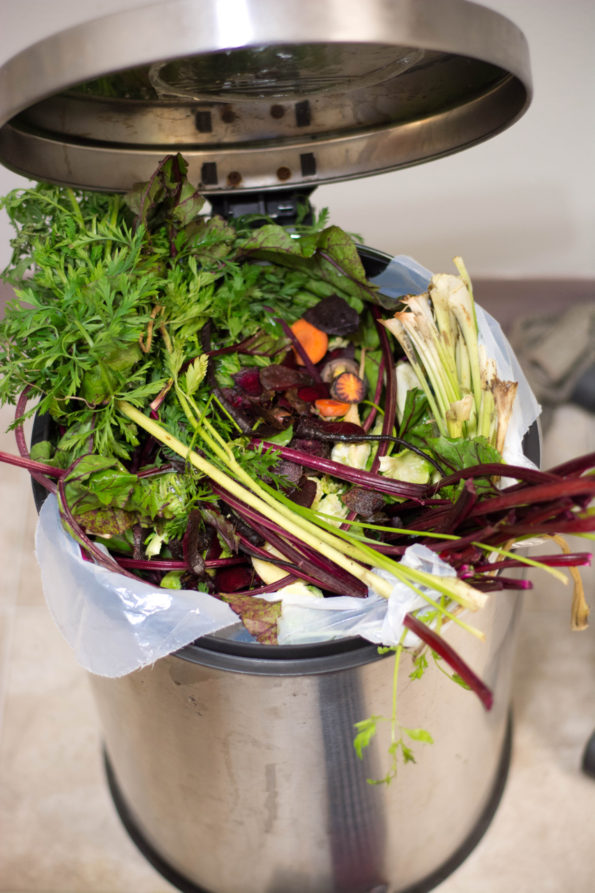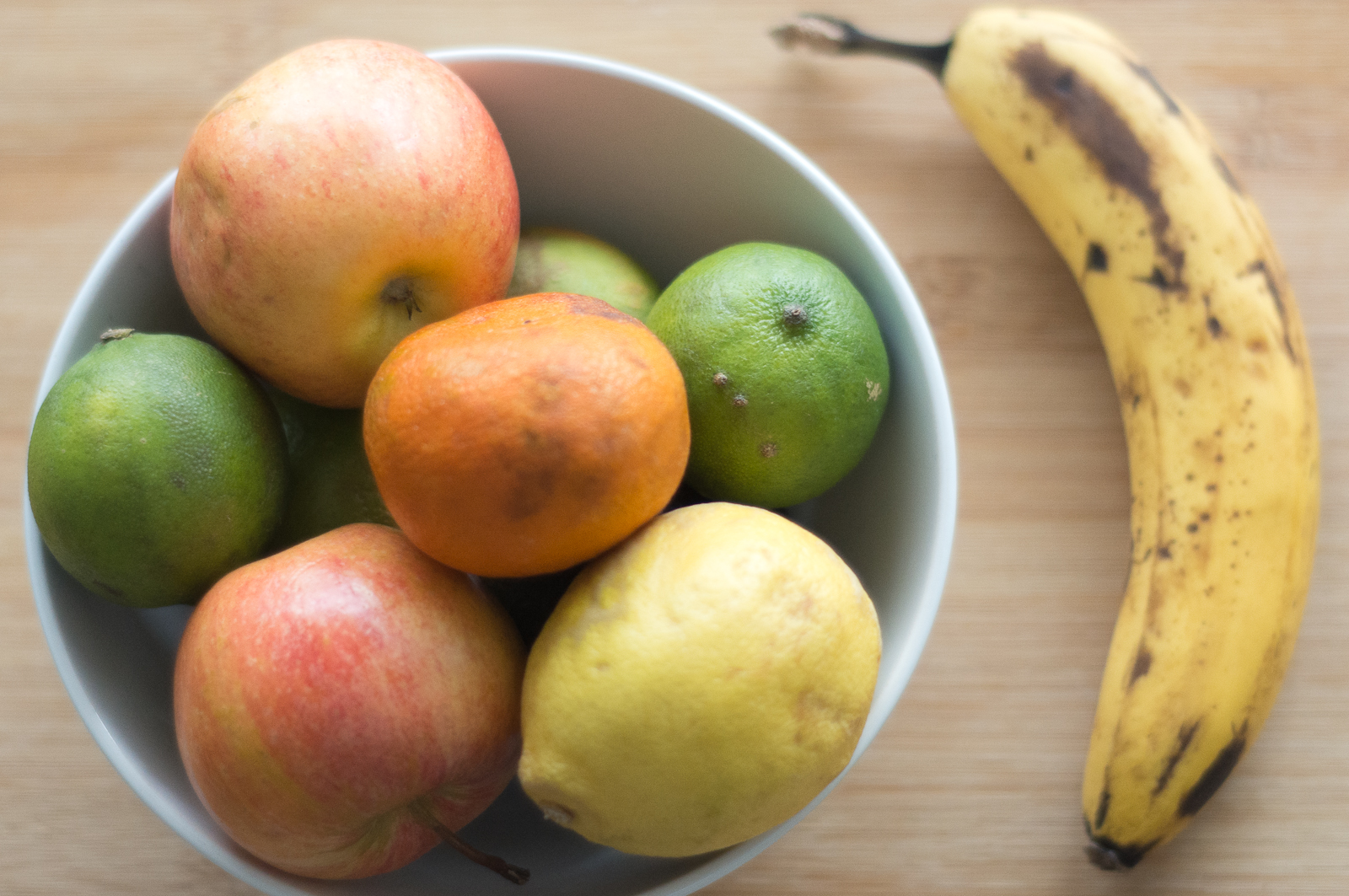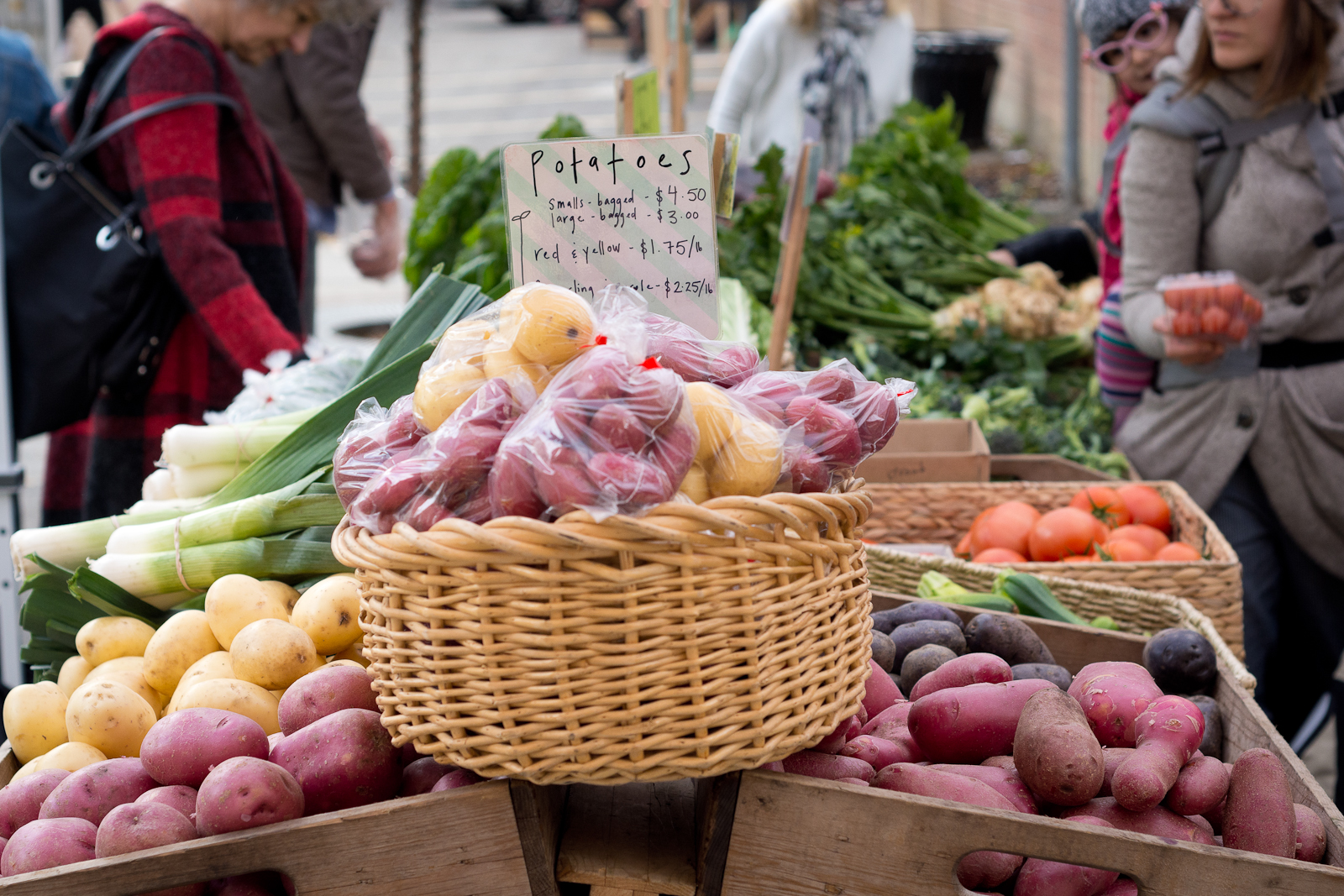Are you a food waste champion? Up until a few days ago I thought I was. I’m the girl who goes to friend’s houses and cleans their fridge for fun, throwing out the rotten and rearranging in the hopes that the food will end up on someone’s fork. The items on my grocery list correlate perfectly with my meal plan, I re-purpose leftovers daily and freeze items to avoid tossing them out. But I have a confession to share: this was my garbage can a few nights ago.
I know – it’s mortifying! After a huge haul from the farmers market I had peeled, chopped and trimmed my way to a delicious meal, leaving a garbage can full of completely edible produce in its wake.
You might be wondering why this is so upsetting to me. For one, I know better. Each year we waste about 40% of all food produced in Canada and most of this waste happens at the household level (aka, me and you) (1,4). Would you go to the bank, take out $1500 and then immediately throw it in the trash? Well, that’s what the average Canadian household does every single year through food waste alone (4,5).
So reducing food waste seems like a no-brainer right? But just because it sounds simple, doesn’t make it so. But what goes wrong?
There are many reasons why perfectly nutritious food ends up in the garbage instead of on our plates. Whether it’s preparing and plating too much food or misunderstanding “best before” dates, we often don’t even realize the many ways we waste our food.
But by far the number one cause of individual waste is our careless attitude towards food. It’s wonderful to have any food available to us 24/7, but that also feeds the mindset that all food is both cheap and abundant (2). And you think you’re facing unreal beauty standards? Imagine how your food feels! Tonnes (literally!) of perfectly edible food is thrown away because of odd shapes, discolouration or other reasons it didn’t meet our expectations of what a perfect potato should look like.
So what can we do to reduce the amount of food waste in our homes?
1. Take Stock before you Shop
Do a food inventory each week so you can keep a close eye on what’s in your fridge, freezer, pantry and cupboards. This way you’ll know which foods need to be eaten first and you won’t end up buying food you already have.
2. Planning makes Perfect
Figure out your meals for the week using food that you already have at home. Then make a shopping list for the rest and be sure to stick to it when you’re shopping.
3. Serve and Preserve
Make only what you need or have a plan for the leftovers ahead of time. Serving smaller portions will cut down on uneaten food going into the garbage. Remember, you can always go for seconds.
4. Get Creative!
Excess food and old ingredients can be reinvented and repurposed. For example, you can grind up stale bread for breadcrumbs, freeze wilting spinach for smoothies and use vegetable trimmings in soups, sauces and stocks.
5. Look for Diamonds in the Roughage
Buying “ugly” produce means that under-sized, discoloured or misshapen items are less likely to end up in the landfill. These so-called imperfections have no impact on nutrition or taste but often lead to cheaper prices.
6. Don’t be baffled by “Best Before Dates”
Many people don’t realize that“best before”dates have nothing to do with the safety of the food. Rather, they only provide information about freshness and the potential shelf life of the unopened product.
7. Keep it Fresh
Brush up on your food safety guidelines and make sure to store foods correctly. Preserve older items in the freezer and arrange your fridge so the foods you need to use first are at the front.
8. Spread the Food Love
Donate non-perishable foods that you won’t use to the food bank . Extra produce from your garden or fruit trees can also be donated to Meals on Wheels or a fruit rescue in your area.
9. Make some Mulch
Some food scraps just can’t be salvaged. So when it comes to egg shells and banana peels it’s best to turn them into plant food instead of sending them to the landfill. But remember, this should be your last resort. If your compost is filled with food that could have been eaten otherwise, you still have some work to do inside.
10. Promote the Value of Food
It is our attitude towards our food that needs the biggest change. There’s a whole system of production behind that perfectly packaged asparagus, and we need to increase our awareness of where it comes from and where it ends up.
It may seem like a big mountain—as big as that mountain of food waste sticking out of my garbage can. But just like any behaviour change, small changes add up over time. So pick the area where you know you can make a difference and start today. One of the tips spoke loud and clear to me and I know that this is where I can make a difference. So look for the upcoming blog post where I show you how I am finding unique ways to turn that tasty trash into delicious treasure (tips and suggestions welcome!).
Hope you found these tips a-peeling,
References
1) Gooch, M., Felfel, A., Marenick, N. (2010). Food waste in Canada: Opportunities to increase the competitiveness of Canada’s agri-food sector, while simultaneously improving the environment. Available online at http://vcm-international.com/wp-content/uploads/2013/04/Food-Waste-in-Canada-112410.pdf.
2) Gooch, M., Marenick, N., Laplain, D. (2012). Cut Waste: GROW PROFIT: How to reduce and manage food waste, leading to increased profitability and environmental sustainability. Available online at http://vcm-international. com/wp-content/uploads/2013/05/Cut-Waste-Grow-Profit-FINAL-DOCUMENT-Oct-3-121.pdf.
3) Gooch, M., Felfel A. (2014). “27 Billion” Revisited – The Cost of Canada’s Annual Food Waste. Available online at http://vcm-international.com/wp-content/uploads/2014/12/Food-Waste-in-Canada-27-Billion-Revisited-Dec-10-2014.pdf
4) Gooch, M., Sparling, D., Uzea, N. (2014). Developing an Industry Led Approach to Addressing Food Waste in Canada. Available online at http://provisioncoalition.com/Assets/website/PDFs/Provision-Addressing-Food-Waste-In-Canada-EN.pdf
5) Statistics Canada. Table203-0028 – Survey of household spending (SHS), detailed food expenditures, Canada, regions and provinces, annual (dollars). CANSIM (database). (Accessed: October 5, 2016)





